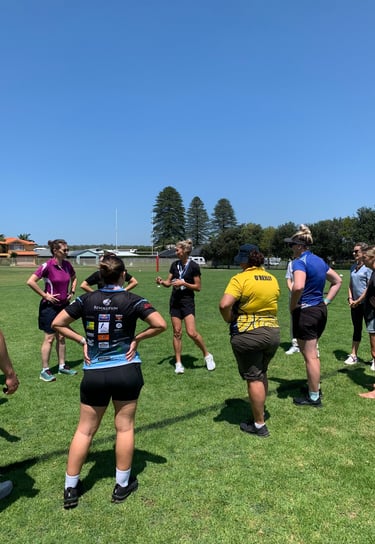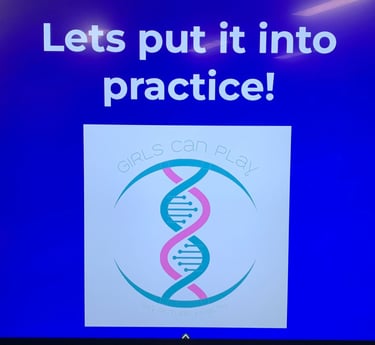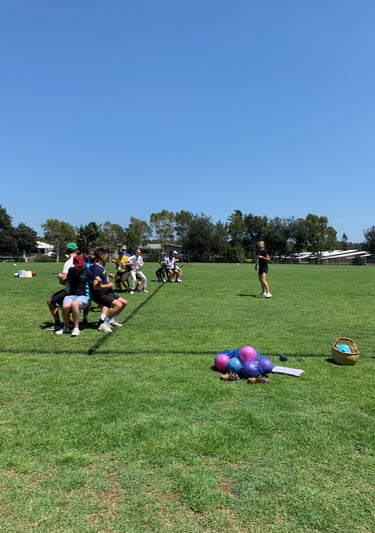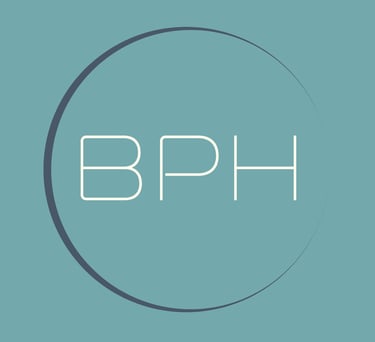The Big Picture
As the pace and pressures of teaching increase, I think sometimes this purpose gets lost in the vast system that is education. Our education system is a good one, and we have incredible teachers doing amazing things. But we all know there’s a significant gap in holistic sport, health, and wellbeing education that we simply can’t cover within the limits of a school day.
Kellie Coates
5/23/20256 min read


I became a teacher to empower and educate through experience.
I believe we all become teachers with an underlying intention or purpose. We see a bigger picture that we wish to contribute to in a positive way, and teaching is a fantastic platform to do this.
As the pace and pressures of teaching increase, I think sometimes this purpose gets lost in the vast system that is education. Our education system is a good one, and we have incredible teachers doing amazing things. But we all know there’s a significant gap in holistic sport, health, and wellbeing education that we simply can’t cover within the limits of a school day.
I saw gaps that the curriculum couldn’t fill, and that we, as teachers, couldn’t address within the boundaries of our structures. I continued to see non-participation and sports dropout rates climb. I taught and coached girls (and still do) who struggled with:
body image issues
a lack of understanding of how to become a successful female in a male-dominated space
cultural and social pressures
feelings of disempowerment and a lack of voice
the challenge of being truly authentic, resilient, and confident in sport and life
rising mental ill-health
Having lived with an eating disorder that took control of my life from my late teens to my late 20s—while also being an athlete—I struggled to find ways to climb out of that space. I knew what it felt like to receive well-meaning support from people who didn’t have the experience or knowledge to truly help me. So, I travelled a path of personal development.
I began to understand that to make a meaningful impact on our kids' health and wellbeing, we must first work on our own. We need to refine our skills, deepen our experiences, and learn what it really takes to support them.
The mind-body connection is powerful. Yet in PDHPE, we often separate the two—health and personal development as theory, and physical education as practice. But they are interconnected, and one always affects the other. So why don’t we teach it that way?
I firmly believe in never asking anyone to do something I’m not willing to do myself. To teach or coach well is more than just knowing—it’s about exploring, experiencing, and sharing what works (and sometimes, what doesn’t). A teaching degree or coaching certification doesn’t always prepare us for the wellbeing aspects of our role.
When I began to integrate strategies I had learned into my teaching and coaching, it became clear that the key to positively impacting the wellbeing of our kids was to create physical environments that also cultivate mental and emotional skills.
That’s why I wanted to create a space where we can empower and educate young people in skills and strategies that go beyond the curriculum—skills that require lived experience to be truly understood and adopted.
Big Picture Health was born out of a desire to meet real, visible needs. As a PE teacher, coach, mother, sister, friend—and as a woman—I set myself a Bold Authentic Goal:
"To raise girls with grit and empower women of action."
Big Picture Health’s mission is to provide young women and girls with safe, inclusive opportunities to engage in positive wellbeing practices and develop resilient leadership. We empower them to reach their potential in wellbeing, sport, and life.
What mental health qualities should be cultivated in schools and communities?
First, mental health is health. Our physical, mental, emotional, social, and environmental health all contribute to one whole being. When we bring this holistic view to life in our homes, schools, and communities, we begin to nurture the qualities needed for lifelong wellbeing.
However, this work is not solely the responsibility of schools. There’s a growing tendency to funnel every societal issue into the school system and expect teachers to fix it. While it may seem like a convenient solution, it’s not effective.
The PDHPE curriculum is already overloaded. Trying to be everything to everyone in just two hours a week doesn’t work. I teach students about:
communication
conflict resolution
relationships (healthy, unhealthy, and abusive)
job readiness
mental health
nutrition
drugs and alcohol
puberty and sexual health
consent
cyber-safety
physical literacy (a wide variety of sports and fitness skills)
risk management
first aid
and more
And I don't believe we have enough time to do any of it well.
When over 80% of young Australians are insufficiently active, and more than 85% of young females still cite barriers to participation—like low confidence, lack of time, and appearance concerns—we need to seriously rethink our approach. The research is clear: physical activity plays a major role in supporting mental health and preventing illness. But how can we fit all of this into a two-hour window each week?
Kids spend more time outside of school than in it. Home, community, sport, and extracurricular activities all present opportunities for impact—but families and volunteers are stretched. As a result, schools often feel like the mainsail of this ship.
That said, schools do have a powerful opportunity to shape thoughts, feelings, and behaviours. And when we collaborate with parents and the community, meaningful change becomes possible.
But how do we make change with limited time and resources?
I once found myself asking, “What’s the point?” If we aren’t supported by other areas in a student’s life, how can we make a difference?
A colleague said something I’ll never forget:
“You only have to get through to one. If you impact one, you’ve made a difference.”
That hit me like a bolt of lightning. I had been so focused on helping everyone that I felt like I was failing. The truth is, we won’t reach everyone—but we can help one. And that one might be the ripple that changes everything.
So what individual qualities are we aiming to nourish?
1. Self-awareness, self-regulation, and self-reflection
We often teach what these are, but rarely create enough opportunities for students to practice them. We need to build space into our programs for this work. “Tick-the-box” teaching won't cut it.
2. Grit and resilience
Grit is the passion and perseverance to pursue long-term goals. Resilience is the ability to bounce back and adapt to adversity. These are personal skills that can be developed. If we break things down into manageable, actionable steps, we can support kids in building both. But we must also model these qualities ourselves—kids watch more than they listen.
3. Self-compassion
Self-compassion is treating yourself with the same kindness you'd show a friend. Life is not black or white. It’s not all wins or all failures—it’s mostly grey. When we accept that successful people have failed many times and learned from it, we normalize struggle and growth. Self-compassion isn’t about telling yourself you’re amazing—it’s about aligning with your values and empowering yourself to move forward.
4. Growth mindset
A growth mindset is the belief that intelligence and abilities can be developed through effort. When we teach kids how their brains work—especially during the massive changes of adolescence—we help them reframe challenges as opportunities.
Where are the gaps?
Schools are doing a great job educating students about what mental health is, what influences it, and how to seek help. Mental health is now part of the daily conversation. And that’s progress.
But the gap lies in practice.
When was the last time you:
showed a teen to use their breath to self-regulate?
gave them time to journal with guided prompts?
helped them apply physical regulation tools like breathwork or progressive muscle relaxation?
introduced meditation through guided visualisation?
helped them set goals and implementation intentions (e.g. “If X happens, then I will…”)?
offered time for real self-reflection—not just on school tasks, but on life?
We know that to support someone else’s mental health, we need to be in good health ourselves. You can’t pour from an empty cup—and neither can our kids. If we’re serious about wellbeing, it needs to show up in every space our kids exist in.
That takes Big Picture thinking. We can’t do it all at once, but one step at a time, one person at a time, we can shift the culture.
This is a huge opportunity—for personal and professional development among teachers, coaches, sports clubs, community leaders, and parents. If we each take one more step toward living as role models, we’ll show kids the way. If we’re willing to get uncomfortable, we’ll create space for growth and change.
If we’re serious about change, we must take intentional action—learn the skills, apply the tools, and change the shape of wellbeing for ourselves and our kids.
Big Picture Health runs programs for schools and communities in this space.
To find out more, get in touch or visit: www.bigpicturehealth.com.au





